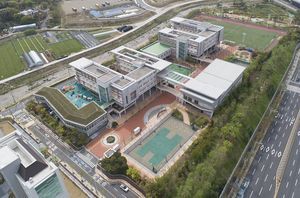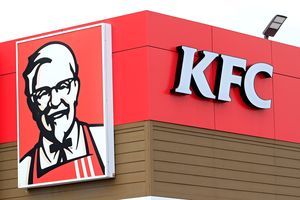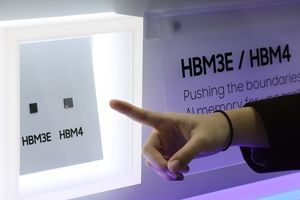![Korea Aerospace Industries headquarters in Sacheon, South Gyeongsang Province (Korea Aerospace Industries)]](https://contents-cdn.viewus.co.kr/image/2025/07/CP-2023-0309/30700421.jpg) Korea Aerospace Industries (KAI) finds itself at a crossroads as it awaits the new government’s likely appointment of the company’s next leader, while rumors of a potential sale resurface.
Korea Aerospace Industries (KAI) finds itself at a crossroads as it awaits the new government’s likely appointment of the company’s next leader, while rumors of a potential sale resurface.
Kang, who retired from the Air Force as a lieutenant general, joined former President Yoon Suk Yeol’s campaign and supported the now-impeached leader in early 2022. He was appointed CEO of Korea’s sole aircraft manufacturer in September of that year, roughly six months after Yoon’s election victory.
Industry experts have repeatedly called for a CEO with professional expertise to lead KAI. However, since the company’s establishment in 1999, all but one of its past eight CEOs have been appointed from outside the company, largely due to political shifts.
Media reports have identified three potential candidates for KAI’s next leader: Ryu Kwang-su, vice president at Hanwha Aerospace and a former KAI executive; Kang Eun-ho, a professor of defense industry at Jeonbuk National University and former chief of the Defense Acquisition Program Administration; and Moon Sung-wook, a former Minister of Trade, Industry and Energy.
KAI’s labor union has criticized two of the three potential nominees—Ryu and Kang—warning of a full-scale strike if political influence, rather than expertise, determines the next leader.
The union alleges that the former KAI executive played a key role in poaching talent from KAI to Hanwha after leaving in 2022.
“If Ryu returns as CEO, it would mean KAI will fall under external control and lose its technological sovereignty,” the labor union stated. “We will oppose Ryu’s comeback attempt by any means necessary.”
The union also objected to Kang, citing allegations of misreporting business expenses and violating anti-graft laws. They added that rumors suggest Kang has been collaborating with former KAI executives to secure the leadership position.
Regarding Moon, the union acknowledged him as the only viable candidate due to his experience as trade minister, despite his lack of hands-on experience in the aircraft industry.
Industry insiders argue that the recurring pattern of new leadership with each government transition hinders KAI’s long-term business strategy.
“The three-year term for KAI’s CEO is incompatible with aircraft development, which typically requires over a decade of sustained investment,” a defense industry official explained.
“A new CEO might overhaul the top leadership, jeopardizing the continuity of ongoing projects. KAI needs a qualified leader who can resist political pressures if it aims to become a global defense industry powerhouse.”
The official noted that over half of KAI’s revenue comes from Korean military contracts, emphasizing the need for a leader who can secure international orders in the future.
Another pressing issue is the speculation surrounding KAI’s privatization. The Export-Import Bank of Korea holds a 26.41 percent stake as the largest shareholder, followed by the National Pension Service with an 8.31 percent stake.
While the Export-Import Bank of Korea has denied plans to sell, rumors persist about potential acquisitions by Hanwha Group and LIG Nex1, two of Korea’s largest defense firms.
“Privatizing KAI is crucial for strengthening our position in the global defense market and enhancing our competitiveness,” said Choi Gi-il, a professor of military studies at Sangji University.
“The privatization process should be market-driven, not government-controlled. Excessive government involvement could favor a particular company, which would be detrimental.”
Choi noted that while a KAI takeover by either Hanwha or LIG Nex1 has pros and cons, privatization would likely create synergies and positive impacts.
“If Hanwha acquires KAI, it could become Korea’s Lockheed Martin, potentially boosting the country’s global competitiveness. However, it might also disrupt the domestic defense industry ecosystem,” he explained.
“For LIG Nex1, it could foster healthy competition that advances the entire market.”
As Korea’s defense stocks surged over the past year due to increasing demand and ongoing geopolitical uncertainties, KAI’s stock value peaked at 101,800 KRW ($76.35) per share on June 16, more than doubling from its 52-week low of 48,000 KRW ($36) on August 5 last year.
KAI reported revenues of 3.64 trillion KRW (2.73 billion USD) and an operating profit of 240.7 billion KRW (180.53 million USD) last year, down 4.9 percent and 2.8 percent from 2023, respectively. Despite this decline, the company’s backlog of orders reached 24.7 trillion KRW (18.53 billion USD) by year-end.
In May, KAI unveiled its value-up plan, pledging to enhance global competitiveness and pursue future business opportunities with a target compound annual growth rate of 20 percent or higher through 2027.










Most Commented